
Cream-filled, glazed, sugared or plain, a donut can make any dessert-lover’s day! (Photo: Hammer Donuts)
Since the early 19th century, the United States has had a love affair with this fabulous confection. Whether you take yours glazed or filled with jelly and dusted with powdered sugar, we can all agree that they are irresistible. We all know it.
But what is it about donuts that makes them so addictive? One explanation for the appeal is flavor. Donuts are a classic example of comfort food — they taste good and make us feel happy. This is due to “hedonic conditioning”, which happens when we pair a flavor with positive emotions. Can you recall the first time you ate your favorite food? Chances are, you felt really happy after eating it. Your brain has associated that flavor with happiness. Second, donuts are often coated in sugar or frosting, and sugar is intensely addictive. And last but not least, donuts are easy to eat.
Today, the donut is one of the most recognizable pastries in the world, with its different flavors, shapes, and bright colors. However, the characteristic shape of the donut is not the same as its origins. Do you know the reason for the hole in the center of the donut? That’s because it helps to cook through evenly, without puffing up in the middle. This way, the donuts keep the same texture all around the ring, and they’re also much easier to flip and dish out from the frying oil.
Did you know that even if you mold fried dough into a muffin shape, it would still be considered a donut? The two most common types are the ring donut and the ball donut, a flattened sphere injected with jam, cream, custard, or another sweet filling. Ring donuts are formed either by joining the ends of a long, skinny piece of dough into a ring or by using a donut cutter, which simultaneously cuts the outside and inside shape, leaving a donut-shaped piece of dough and a donut hole from the dough removed from the center.
Now everything we dough, we dough for you, so in the spirit of bringing good cheer to this delightful pastry, we’ve put together a list of the most interesting donut shapes. Get ready to sink your teeth into some of these amazing delights.
Pon De Ring Donuts
Mochi donuts are a Japanese-American cake/donut shaped into a circular shape by connecting eight small balls that can be easily pulled apart. They’re lighter and more stretchy in texture than regular cake donuts because they’re made with glutinous rice flour or tapioca flour, and can be either fried or baked. Mochi donuts are gluten-free and a healthier alternative to cake or yeast donuts as they do not contain all-purpose flour.
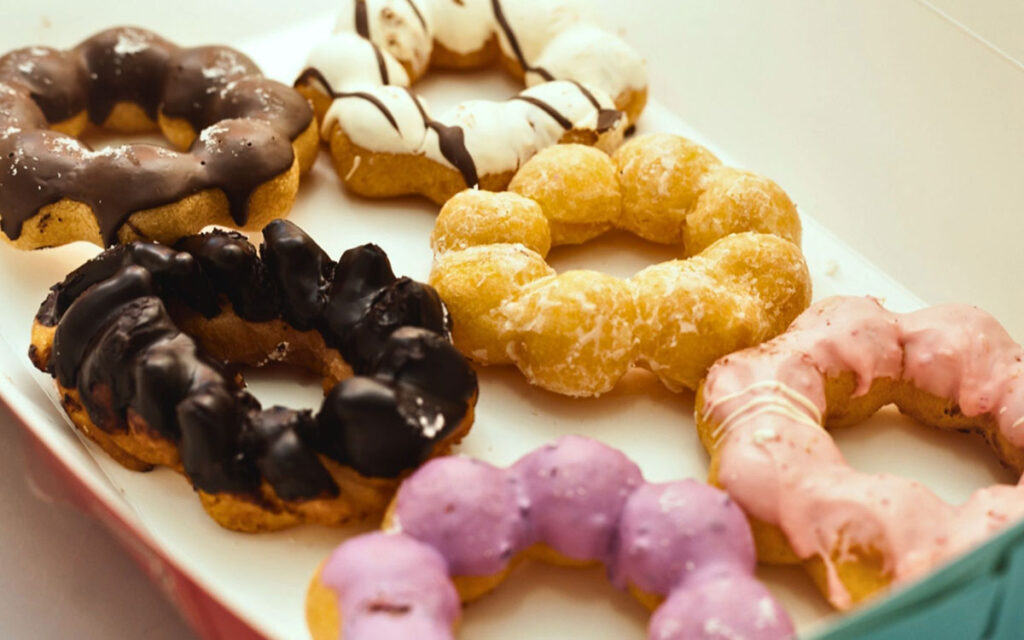
Pon De Ring Donuts are small balls of dough that are linked together to form a ringed donut. (Photo: Hammer Donuts)
Donut Holes
This is an ingenious way to cut food waste! Donut holes are bite-sized fried dough spheres cut from the center of ring donuts and served separately instead of tossing them out. They can also be glazed or injected with fillings such as fruit preserves and custard.
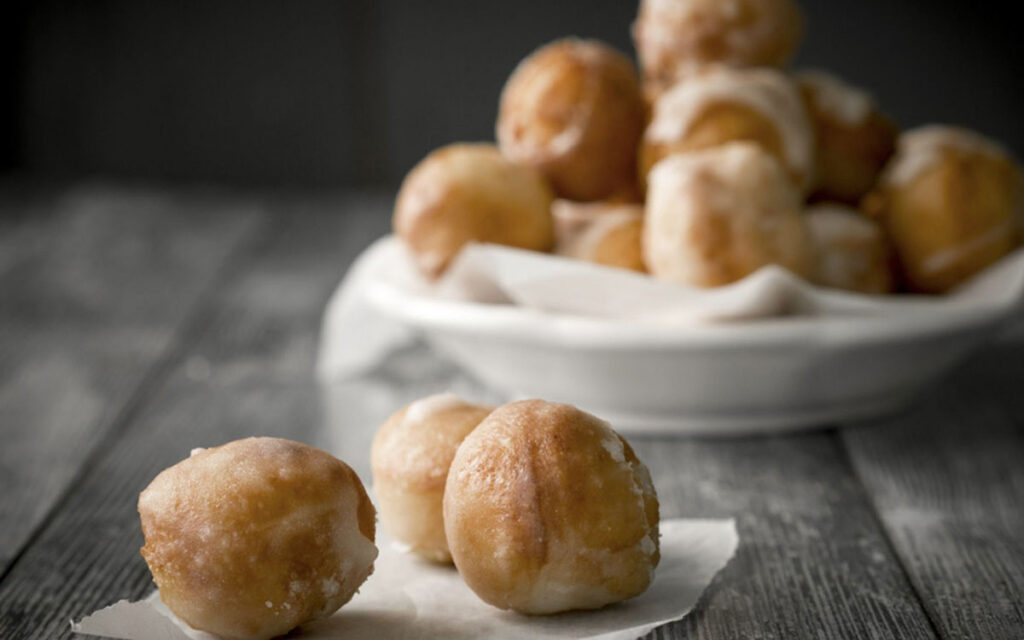
Instead of tossing out, use the dough cut from the center of ring donuts to make bite-sized donut holes. (Photo: Jamie Geller)
Drop Donuts
These are similar to donut holes in that they are made by dropping globs of batter directly into the fryer rather than taking them from the center of ring donuts. Because of the way they’re torn from the batter, they have a more irregular shape than donut holes.
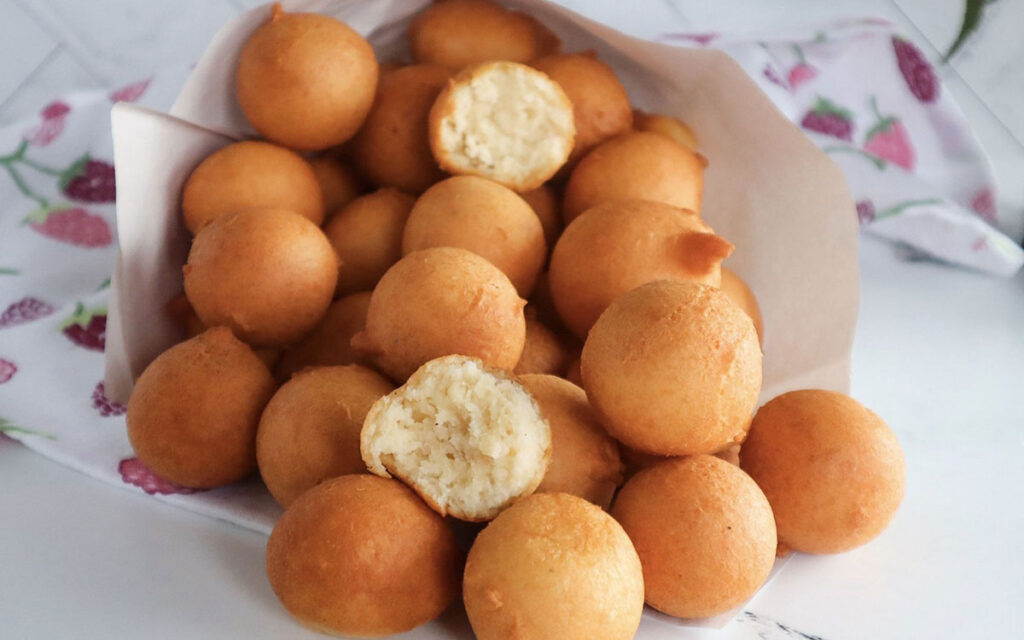
Drop donuts have a more irregular shape than donut holes because of the way they’re torn from the batter. (Photo: Cooking with Claudy)
Crullers
These are donuts that appear to be twisted or braided, and look a little like mini crowns or gears because of their ridges. French crullers are donuts made with choux pastry piped into fluted rings that are incredibly light and airy.
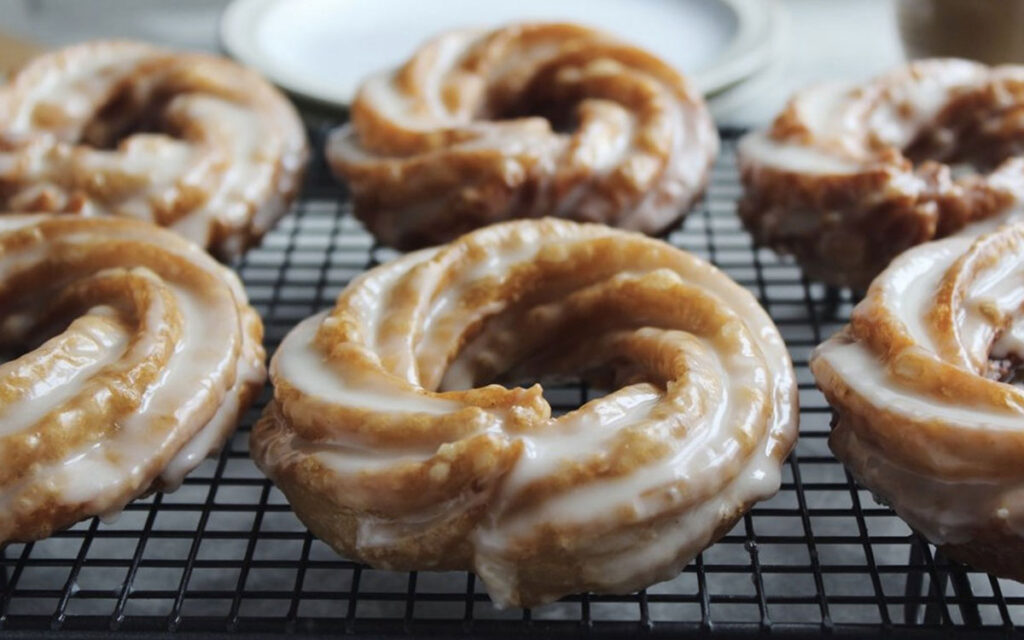
Crullers look like mini crowns or gears because of their ridges. (Photo: Hannah Bakes)
Filled Donuts
Popular especially in parts of Europe, filled donuts are made by injecting fruit preserves, vanilla custard, cream, and other ingredients into hole-less spheres of fried dough. They come in many different flavors and are considered more of a dessert than an afternoon teatime snack.
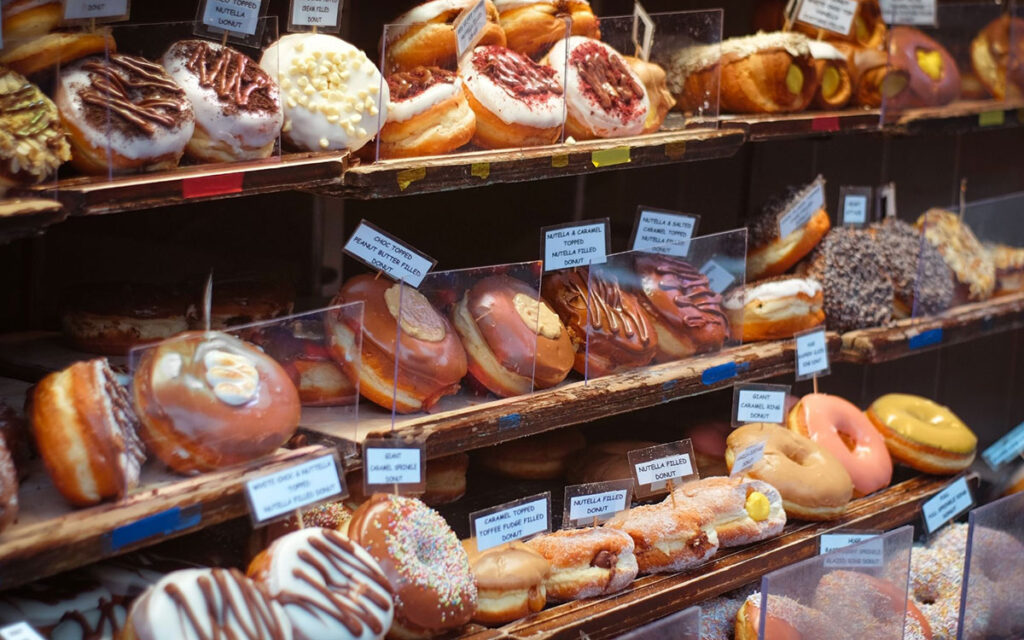
Filled donuts come in many different flavors and are considered more of a dessert than an afternoon teatime snack. (Photo: Viktor Forgacs)
Square
Beignets are a type of donut that is popular in both French and French-American cultures. They are square pastries that are heavily dusted with icing sugar, but there also exist round and oval variations. They’re typically eaten for breakfast or dessert, with hot chocolate or cafe au lait.

Beignets are a type of square-shaped donut pastry heavily dusted with icing sugar. (Photo: Leite’s Culinaria)
Ropes
Shakoy, also known as lubid-lubid (“ropes”), is a twisted, stick-like Filipino donut that is sold at local bakeries and enjoyed with coffee as an afternoon snack. It is traditionally deep-fried and made with flour, sugar, salt, and yeast. White sugar is normally sprinkled on top. The Koesister, a braided or twisted donut from South Africa, has a similar shape. It has a crunchy crust with a soft, syrupy interior and is coated in a sticky-sweet syrup.
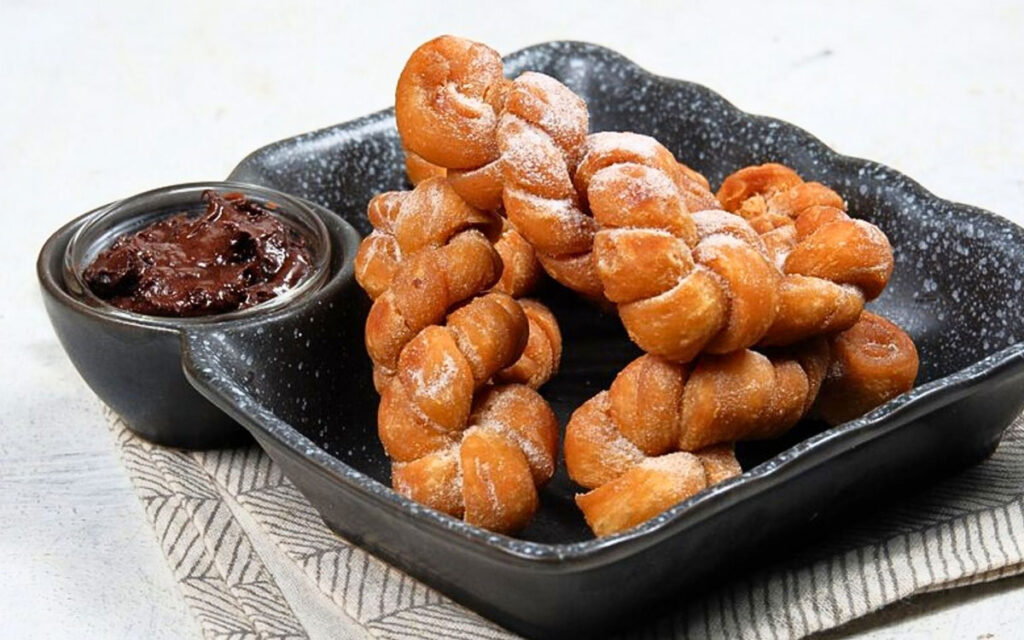
Also known as lubid-lubid, Shakoy is a famous stick-like donut sold at many local bakeries in the Philippines. (Photo: Edgunn)








